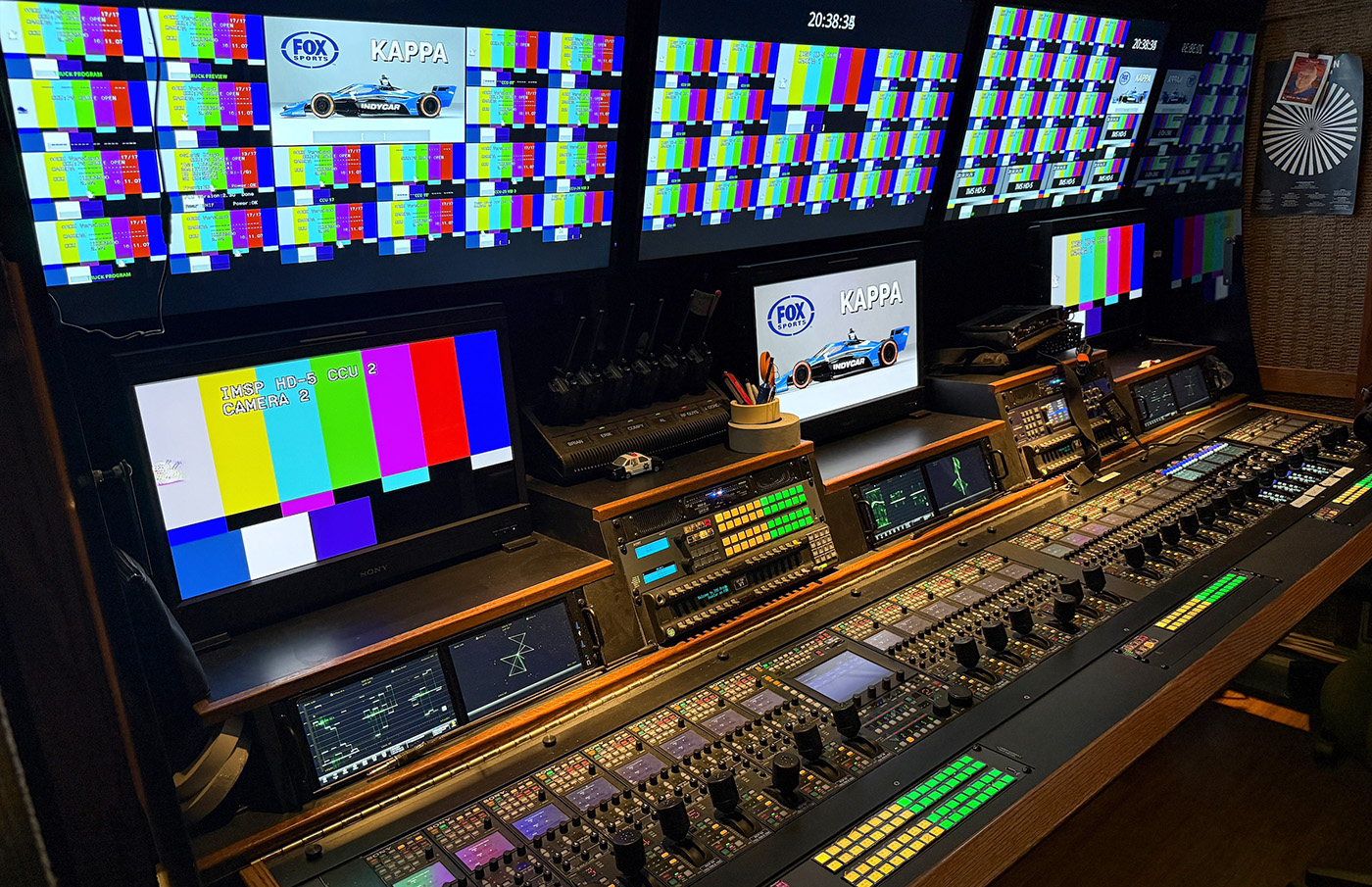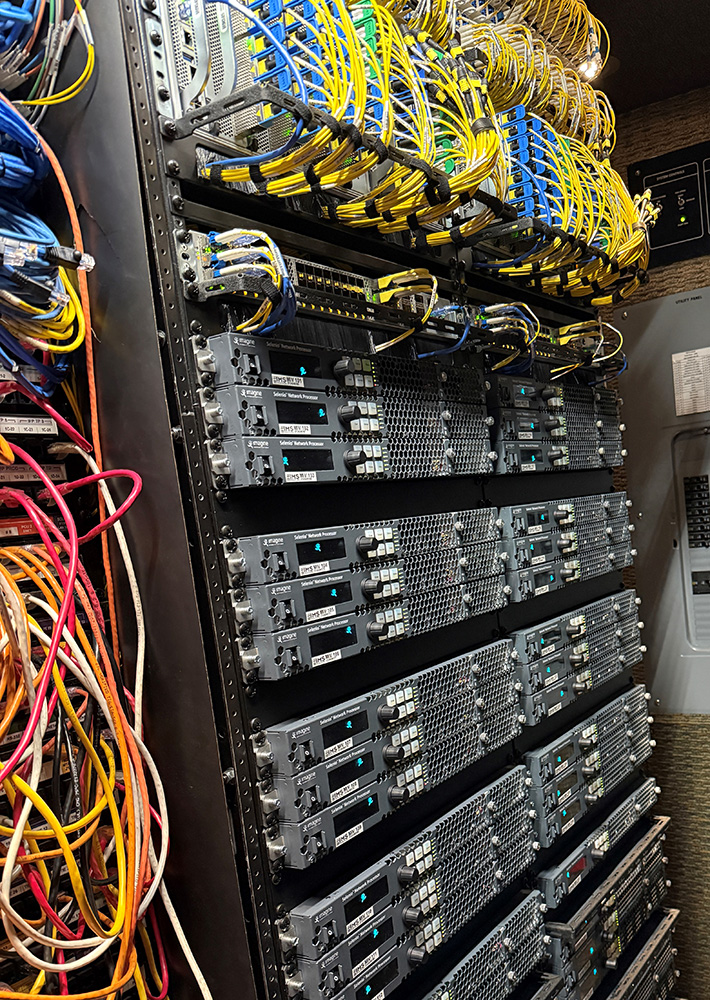IMS Productions upgrades truck with IP core, HDR ahead of Indy 500

Subscribe to NCS for the latest news, project case studies and product announcements in broadcast technology, creative design and engineering delivered to your inbox.
With the 2025 IndyCar season underway and a new broadcast partner in place, IMS Productions has completed a major upgrade to its flagship mobile unit, HD-5. The overhauled truck now features an IP-based infrastructure designed to support high-frame-rate (HFR) cameras, HDR production and expanded routing capacity.
IMS Productions, a division of Penske Entertainment and the technical arm behind IndyCar’s world feed, is also responsible for producing domestic coverage for Fox Sports. The IP transition positions the organization to meet rising technical and coverage demands across both deliverables.
“This came together quickly once rights were finalized,” said Paul Nijak, managing partner and general manager at BeckTV, which led the upgrade. “We looked at the project as a whole and told them, ‘You’re going to save money long term by doing this all at once.’ It also gives Fox the flexibility they need to scale or adapt [coverage] quickly.”

Initiated under a tight timeline, the HD-5 rebuild marks IMS Productions’ first move into IP for mobile production.
BeckTV deployed a Cisco-based IP core with an Imagine Communications orchestration system and SNP multiviewers. The routing infrastructure follows a spine-leaf design using Cisco’s 9408 chassis with 400G capacity, chosen to meet bandwidth demands across HD-5 and its B and C units while conserving space and weight.
“Space and weight are always at a premium in mobile units,” Nijak noted. “This approach helped us achieve the necessary throughput without exceeding the physical footprint.”
The truck includes:
- Grass Valley Kayenne SXP IP switcher (9 M/E, 192×96 matrix)
- 32 Imagine SNP multiviewers
- 11 EVS XT-VIA servers and 2 SpotBoxes
- Adder Technology KVM system
- 5 Telestream PRISM waveform monitors and 2 SPG 9000 sync generators
The entire workflow is HDR-compliant and 1080p-ready, with HDR slated to debut during the May broadcast of the Indianapolis 500.
IMS Productions plans to test the HDR setup during practice sessions ahead of race day, giving engineering teams time to fine-tune camera shading, monitor calibration and tone mapping workflows. The system uses HDR10 across the production chain, with Sony’s HDC-5500L and P50A cameras providing native HDR output and dual SDR/HDR paths. A newly installed HDR-capable monitor wall and Telestream PRISM scopes enable operators to monitor signal integrity in real-time and ensure consistency between HDR and SDR feeds.
Camera package and HFR expansion
The updated camera package includes 22 Sony HDC-5500L units, supported by 24 HDCU-5500 base stations, and 13 Sony P50A cameras used for robotics and POV angles. Multiple high-frame-rate configurations are supported, including six HDC-5500s and two P50As set up for HFR acquisition.
IMS Productions also expanded its lens inventory, deploying a mix of Canon’s broadcast zooms.
The decision to build IP from the ground up was influenced in part by the previous baseband router nearing its I/O limits.
“They were maxed out in terms of what the old router could do, and with more 1080p and HFR workflows coming, it made sense to move to IP,” said Nijak.
BeckTV embedded with the IMS Productions engineering team throughout the build and rollout, providing side-by-side training during events and system testing.
“With any IP project, we treat it like a baseband project at the start – talking in terms of signals, not flows – then help translate those requirements into the IP world,” Nijak said. “From there, it’s about building confidence over time. Every show, we give them more control.”
The original Calrec Apollo console remains in place, but the MADI-to-AES67 transition was a critical part of the redesign. The project also supports an Artemis console and three additional audio consoles for larger productions.
“This wasn’t just a camera or router swap. The audio side had to evolve too, and flipping the router halfway, from MADI to AES67, was a big part of that,” Nijak added.
Despite the move to IP internally, HD-5 continues to rely on satellite delivery, using both C- and Ku-band, for external transmission. While circuit-based delivery is being evaluated for select locations such as the Indianapolis Motor Speedway, temporary race locations make consistent broadband availability a challenge.
“Getting enough bandwidth for contribution on the beach at Long Beach or on a tarmac in St. Pete just isn’t practical right now,” said Nijak. “Until they’re forced to make a change, satellite is still the best option for their footprint.”
Prepared for the future growth of the league
Nijak emphasized that the design of HD-5’s new infrastructure was informed not only by immediate production needs but by forward-looking expectations around format changes, HDR workflows and expanding replay capabilities.
“Fox has talked about increasing their use of HFR from two to six cameras. That kind of growth just wouldn’t be possible with their old router,” Nijak said. “Now, they have the flexibility to grow without hitting hard stops.”
While BeckTV has a long-standing relationship with IMS Productions, dating back more than a decade, Nijak said the success of the HD-5 upgrade hinged on close collaboration throughout.
“This is the kind of project where planning, execution and education all had to move in parallel,” he said. “From day one, it was about helping them understand what IP could offer and then supporting that shift in real-time as shows went live.”
Subscribe to NCS for the latest news, project case studies and product announcements in broadcast technology, creative design and engineering delivered to your inbox.






tags
Adder Technology, AES67, BeckTV, Calrec, Calrec Apollo, Calrec Artemis, Canon, cisco, EVS, Grass Valley, Grass Valley Kayenne, hdr, Imagine Communications, IMS Productions, indycar, Indycar on Fox, Mobile Units and OB Trucks, SMPTE ST 2110, Sony, Telestream, Telestream Prism
categories
4K, HDR and UHD Broadcasting, AV Integration & Broadcast Systems Integration, Broadcast Engineering, Broadcast Equipment, Heroes, Sports Broadcasting & Production